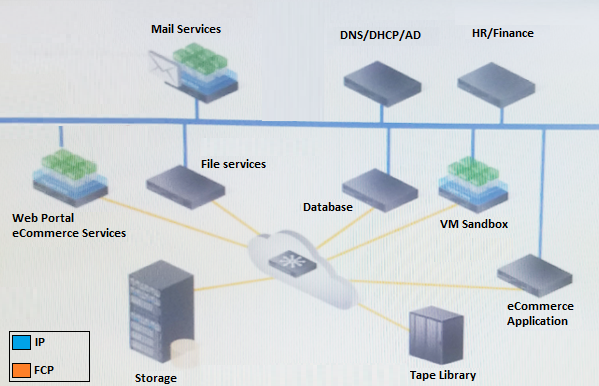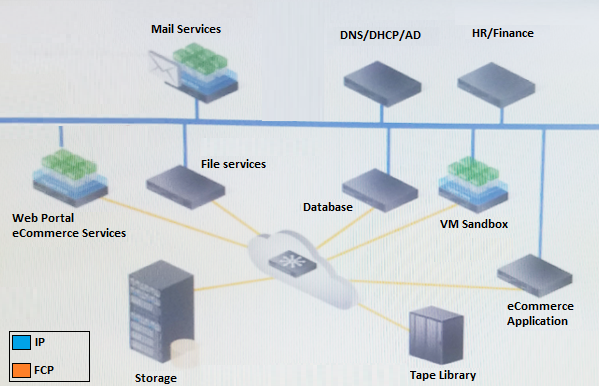At ValidExamDumps, we consistently monitor updates to the Dell EMC DES-2T13 exam questions by Dell EMC. Whenever our team identifies changes in the exam questions,exam objectives, exam focus areas or in exam requirements, We immediately update our exam questions for both PDF and online practice exams. This commitment ensures our customers always have access to the most current and accurate questions. By preparing with these actual questions, our customers can successfully pass the Dell EMC Cloud Architect Specialist - Cloud Infrastructure (Ver 3.0) exam on their first attempt without needing additional materials or study guides.
Other certification materials providers often include outdated or removed questions by Dell EMC in their Dell EMC DES-2T13 exam. These outdated questions lead to customers failing their Dell EMC Cloud Architect Specialist - Cloud Infrastructure (Ver 3.0) exam. In contrast, we ensure our questions bank includes only precise and up-to-date questions, guaranteeing their presence in your actual exam. Our main priority is your success in the Dell EMC DES-2T13 exam, not profiting from selling obsolete exam questions in PDF or Online Practice Test.
SPECIAL INSTRUCTIONS REMINDER
The remaining questions are associated with two cases.
Each case has an introductory, descriptive passage (case text) that describes background information and requirements for a specific cloud based design. And each case has a set of six related, randomized questions. You will need to read the case text in order to answer the related questions correctly.
Given that there are two cases with six scored questions each, the total number of case-based scored questions is 12.
When you display each questions you can easily review the related case text in a pop-up window by clicking on the ''Case'' icon (shown below)
Case 4
Refer to the exhibit.

Your company is currently using a traditional SAN storage network. The server infrastructure is partially virtualized. There is a public cloud in place that is used to test development and application migration to cloud.
Business requirements:
Consolidate the network, storage, and compute resources
Simplify network management and storage provisioning
Maintain application performance
Need to share resources to reduce cost and improve efficiency
Other considerations:
Monitoring of protection SLAs
All transactions must be logged for auditing review
Users are validated using internal credentials
Refer to Case 4.
You are designing a transformation from Platform 2.0 to cloud. You review the existing infrastructure and
business requirements. You must detect events that can exploit vulnerabilities in the cloud. Which technology
should you select?
SPECIAL INSTRUCTIONS REMINDER
The remaining questions are associated with two cases.
Each case has an introductory, descriptive passage (case text) that describes background information and requirements for a specific cloud based design. And each case has a set of six related, randomized questions. You will need to read the case text in order to answer the related questions correctly.
Given that there are two cases with six scored questions each, the total number of case-based scored questions is 12.
When you display each questions you can easily review the related case text in a pop-up window by clicking on the ''Case'' icon (shown below)
Case 4
Refer to the exhibit.

Your company is currently using a traditional SAN storage network. The server infrastructure is partially virtualized. There is a public cloud in place that is used to test development and application migration to cloud.
Business requirements:
Consolidate the network, storage, and compute resources
Simplify network management and storage provisioning
Maintain application performance
Need to share resources to reduce cost and improve efficiency
Other considerations:
Monitoring of protection SLAs
All transactions must be logged for auditing review
Users are validated using internal credentials
Refer to Case 4.
You are sizing the compute capacity nodes in a hyper-converged infrastructure solution. Each node has 35 TB of storage capacity. You have calculated the total cloud storage requirement to be 700 TB.
What is the minimum number of nodes required?
You are designing the VLANs for a CI cloud. You want to separate the LAN traffic to prevent oversubscription.
What are the traffic categories you should use?
A company plans to invest $315,000 to cover hardware, software, and deployment expenses. They expect to save $35,000 per month. They are using a decommissioning cost of $35,000 for the old equipment.
After how many months will the company reach the break-even point?
In a cloud design, an architect has defined a separate trust zone for host management. The hosts will be
running open source hypervisors.
What should be included in the design deliverables to support this separate trust zone?